Shaman - Spiritual Powers - Tier 1
The Barbarian, Ranger, and Shaman are three closely linked character classes that operate on a continuum. All three are Nature-revering professions. The Barbarian has strong combat skills and a smattering of spells. The Ranger balances prowess and magic. The Shaman is weaker in physical battle but wields powerful Nature-based spells as well as a moderate amount of healing power. Unlike a Priest, who learns in universities and from books, a Shaman is typically taught in small groups by a revered elder. While both Priests and Shamans serve the Light, Priests generally have an urban outlook while Shamans are decidedly rural.
Granted Powers
Shamans, by virtue of their profession, gain the ability to shape-change into animals, resist elemental damage, and resistance to spiritual powers.
| Table: Shaman Granted Powers | |||
Level | Animal Forms | Elemental DR: Spells | Ambient | Resist Spiritual Powers* |
1 | 1 | 1 | 1 | 3% |
2 | 1 | 1 | 1 | 6% |
3 | 1 | 2 | 1 | 9% |
4 | 1 | 2 | 1 | 12% |
5 | 2 | 3 | 2 | 15% |
6 | 2 | 3 | 2 | 18% |
7 | 2 | 4 | 2 | 21% |
8 | 2 | 4 | 2 | 24% |
9 | 2 | 5 | 3 | 27% |
10 | 3 | 5 | 3 | 30% |
11 | 3 | 6 | 3 | 33% |
12 | 3 | 6 | 3 | 36% |
13 | 3 | 7 | 4 | 39% |
14 | 3 | 7 | 4 | 42% |
15 | 4 | 8 | 4 | 45% |
16 | 4 | 8 | 4 | 48% |
17 | 4 | 9 | 4 | 51% |
18 | 4 | 9 | 4 | 54% |
19 | 4 | 10 | 5 | 57% |
20 | 5 | 10 | 5 | 60% |
| * Add Willpower Animal Form: The Shaman can memorize the shape and function of one or more animals. It takes a day of meditation to memorize an animal. That isn't to say that a Shaman spends the whole day in the Lotus position with his/her eyes closed. But the Shaman cannot cast other spells that day, cannot engage in strenuous physical activity, and must spend most of the day in quiet contemplation. Forms can be forgotten/changed later but it takes a full day to memorize a replacement form. A Shaman can assume an animal form for one turn per level and costs a point of BMS. This spell can be cast any number of times in a day so long as the Shaman has sufficient BMS. The GM may rule that the animal form is fatigued if cast under low BMS conditions. Physical injuries on the Shaman's natural form reflect on the animal form. A Shaman gains all of the natural abilities of the selected form but none of the supernatural abilities the animal form may possess. The Shaman's clothes and immediate possessions (like a backpack) are bound into the animal form. It's worth noting that Undead Shamans have Undead animal forms. As Undead entities are inherently magical in nature, the Undead animal forms are just as functional as their living counterparts. In other words, an Undead falcon form could still fly and an Undead dolphin form could still swim. These animal forms are typically "skeleton" and not the "zombie" variety. Elemental Damage Resistance: The number is deducted from the damage inflicted (which could result in the Shaman taking no damage at all). The "spell" DR refers to elemental effects from spells or spell-like abilities. For example, the Fey's Whirlwind innate power is a spell-like ability that causes Air damage. A spell that rains down fire would cause Fire damage. By contrast, examples of ambient elemental damage would be exposure to fire in a burning building or hypothermia from falling through the ice into a lake in the middle of winter. | |||
Faith-Based Granted Powers
A Shaman's spiritual powers are keyed to Faith (as opposed to Body-Mind-Spirit) and invoking a spiritual power consumes spiritual points (as opposed to BMS). Like a Priest, a Shaman is a moral guide and healer to the community he/she serves. All of the bonuses are cumulative. For example, if a Shaman has a Faith of 16, he/she also gets all of the bonuses for 15 and 14.
This table is modified from the printed (book) version: Bonuses are now cumulative, the table goes to 25. Additionally, the list of Faith-indexed Granted Powers has been rewritten from scratch in order to focus on certain Shamanic signature powers.
| Faith Score | Granted Power |
| 14 | +1 Elemental Spell Damage ResistanceShapechange lasts an extra turn (once per day). |
| 15 | Shaman can cast healing 1d4, once per day for free. This spell works on humanoids, plants, and animals equally.Shaman can memorize one extra animal form. |
| 16 | Shaman can cast healing 1d8, once per day. This spell works on humanoids, plants, and animals equally.Shaman can dilute poison in himself or another person, reducing the poison intensity by 2. This could result in complete detox. |
| 17 | Shaman can shape-change one ally at the same time as the Shaman changes form. The range is 5// line of sight, must be the same form, and the duration is the same.Shaman can retake one failed Willpower roll, once per day.+2 Elemental Spell Damage Resistance. |
| 18 | The Shaman can memorize an extra animal form. The Shaman can shape-change into a tree form (this uses one of the available shape-change slots). Shape-changing into a tree heals the shaman for one hit point per turn if the weather is sunny.+1 Elemental Ambient Damage Resistance.The Shaman can banish a summoned elemental once per day (match the Shaman's Willpower+Level against the Elementa's Willpower+HD). |
| 19 | Shaman can cast Heal 2d8 once per day. This spell works on humanoids, plants, and animals equally.Shape-change last an extra hour (once per day).Shaman can unconditionally remove poison from a person/animal/plant once per day. |
| 20 | Heal all allies (humanoid or animal) within 30 feet for 1d8, once per day. Reduce poison by 2 intensities to all allies within 30 feet, once per day. |
| 21 | Shaman can "emergency teleport" himself/herself and up to five humanoid companions and five animal companions to a pre-defined safe place (typically the Shaman's home) once per day. The spell does not transcend world/dimensional boundaries but will always bring the Shaman and party somewhere safe.Extra banish attempt against summoned elementals. |
| 22 | The Shaman can heal all allies (humanoid and animal) within 30 feet for 2d8, once per day.Reduce poison by 4 intensities for all allies within 30 feet, once per day. |
| 23 | The Shaman becomes a figure of legend and is remembered for 4d10 generations. The Shaman's life is not extended. However, the Shaman will never again be susceptible to ordinary diseases (even ordinary fatal diseases) The Shaman will have good health until he/she has reached the normal maximum lifespan for the character's race. |
| 24 | The Shaman can shape-change two additional companions (same rules as Faith 17).Extra animal form.Heals one hit point per round while in tree form during sunny weather.Shaman can re-incarnate a dead ally into a tree. After a month, the re-incarnated tree shape-changes permanently back into the person's original form and is fully healed in all categories. |
| 25 | If slain in battle, the Shaman's spirit rises from his/her body as an Elemental (type is the Shaman's choice) and has hit dice equal to the Shaman's level. The elemental form lasts for a turn and has all of the spell-like abilities, attack forms, and movement capabilities of the elemental type in question. The Shaman's spirit ascends after one turn and heals all allies within 100' for 3d8 points on the final round of corporeal existence. . |
Shaman - Affect Undead
A Shaman's ability to turn away Undead is nearly as potent as a Priest's.
| Shaman Character Level | Hit Dice of Opposing Undead Creature | |||||||||||||||||||
| 1 | 2 | 3 | 4 | 5 | 6 | 7 | 8 | 9 | 10 | 11 | 12 | 13 | 14 | 15 | 16 | 17 | 18 | 19 | 20 | |
| 1 | 14 | 17 | 20 | 23 | 26 | 29 | 32 | 35 | 38 | 41 | 44 | 47 | 50 | 53 | 56 | 59 | 62 | 65 | 68 | 71 |
| 2 | 12 | 15 | 18 | 21 | 24 | 27 | 30 | 33 | 36 | 39 | 42 | 45 | 48 | 51 | 54 | 57 | 60 | 63 | 66 | 69 |
| 3 | 10 | 13 | 16 | 19 | 22 | 25 | 28 | 31 | 34 | 37 | 40 | 43 | 46 | 49 | 52 | 55 | 58 | 61 | 64 | 67 |
| 4 | 8 | 11 | 14 | 17 | 20 | 23 | 26 | 29 | 32 | 35 | 38 | 41 | 44 | 47 | 50 | 53 | 56 | 59 | 62 | 65 |
| 5 | 6 | 9 | 12 | 15 | 18 | 21 | 24 | 27 | 30 | 33 | 36 | 39 | 42 | 45 | 48 | 51 | 54 | 57 | 60 | 63 |
| 6 | 4 | 7 | 10 | 13 | 16 | 19 | 22 | 25 | 28 | 31 | 34 | 37 | 40 | 43 | 46 | 49 | 52 | 55 | 58 | 61 |
| 7 | 2 | 5 | 8 | 11 | 14 | 17 | 20 | 23 | 26 | 29 | 32 | 35 | 38 | 41 | 44 | 47 | 50 | 53 | 56 | 59 |
| 8 | 0 | 3 | 6 | 9 | 12 | 15 | 18 | 21 | 24 | 27 | 30 | 33 | 36 | 39 | 42 | 45 | 48 | 51 | 54 | 57 |
| 9 | -2 | 1 | 4 | 7 | 10 | 13 | 16 | 19 | 22 | 25 | 28 | 31 | 34 | 37 | 40 | 43 | 46 | 49 | 52 | 55 |
| 10 | -4 | -1 | 2 | 5 | 8 | 11 | 14 | 17 | 20 | 23 | 26 | 29 | 32 | 35 | 38 | 41 | 44 | 47 | 50 | 53 |
| 11 | -6 | -3 | 0 | 3 | 6 | 9 | 12 | 15 | 18 | 21 | 24 | 27 | 30 | 33 | 36 | 39 | 42 | 45 | 48 | 51 |
| 12 | -8 | -5 | -2 | 1 | 4 | 7 | 10 | 13 | 16 | 19 | 22 | 25 | 28 | 31 | 34 | 37 | 40 | 43 | 46 | 49 |
| 13 | -10 | -7 | -4 | -1 | 2 | 5 | 8 | 11 | 14 | 17 | 20 | 23 | 26 | 29 | 32 | 35 | 38 | 41 | 44 | 47 |
| 14 | -12 | -9 | -6 | -3 | 0 | 3 | 6 | 9 | 12 | 15 | 18 | 21 | 24 | 27 | 30 | 33 | 36 | 39 | 42 | 45 |
| 15 | -14 | -11 | -8 | -5 | -2 | 1 | 4 | 7 | 10 | 13 | 16 | 19 | 22 | 25 | 28 | 31 | 34 | 37 | 40 | 43 |
| 16 | -16 | -13 | -10 | -7 | -4 | -1 | 2 | 5 | 8 | 11 | 14 | 17 | 20 | 23 | 26 | 29 | 32 | 35 | 38 | 41 |
| 17 | -18 | -15 | -12 | -9 | -6 | -3 | 0 | 3 | 6 | 9 | 12 | 15 | 18 | 21 | 24 | 27 | 30 | 33 | 36 | 39 |
| 18 | -20 | -17 | -14 | -11 | -8 | -5 | -2 | 1 | 4 | 7 | 10 | 13 | 16 | 19 | 22 | 25 | 28 | 31 | 34 | 37 |
| 19 | -22 | -19 | -16 | -13 | -10 | -7 | -4 | -1 | 2 | 5 | 8 | 11 | 14 | 17 | 20 | 23 | 26 | 29 | 32 | 35 |
| 20 | -24 | -21 | -18 | -15 | -12 | -9 | -6 | -3 | 0 | 3 | 6 | 9 | 12 | 15 | 18 | 21 | 24 | 27 | 30 | 33 |
Turning Attempts: 1 per 1 levels
Creatures Affected: 2 per 3 levels
Duration of Turning Effect: 1 round per level
Combined Faith Bonus: +3
Special Rules if the Shaman is Undead
As Undead characters cannot channel energy from the Plane of Radiance, they instead draw from the Plane of Shadow. This has a profound effect on their ability to affect other Undead. Rather than turning such creatures away, an Undead Shaman can bolster Undead.
For the duration of the "turning" effect, bolstered Undead will view the Cavalier favorably (although they will not automatically obey the Shaman). Additionally, bolstered Undead gain a +2 to hit, +2 to damage, +2// to movement speed, and +2 to AC.
| Table: Shaman Tier Access | ||||
Tier | Level for Access | |||
Faith Score | 16 or less | 17-18 | 19-20 | 21+ |
First | Level 1 | Level 1 | Level 1 | Level 1 |
Second | Level 3 | Level 3 | Level 3 | Level 3 |
Third | Level 6 | Level 5 | Level 5 | Level 5 |
Fourth | Level 11 | Level 10 | Level 8 | Level 7 |
Fifth | Level 16 | Level 15 | Level 11 | Level 9 |
Like the Barbarian, a Shaman draws sigils when casting spells. This serves as the focus for concentrating the required spiritual energy. A Shaman may attempt to cast spells without drawing a sigil (for example, if the Shaman's hands are tied or if the Shaman has nothing to draw with). In that event, the GM will determine an appropriate casting penalty.
 Awareness
Awareness
Tier: 1
Prayer: 3 segments
Spirit Cost: 8 points
Range: Touch
Duration: 1 turn per level
Area of Effect: The Shaman (initially)
Classification: Enhancement
Shamans already have a well-earned reputation for being highly aware and integrated with nature. However, sometimes even Shamans need a boost to their ability to make sense of their surroundings. This is particularly true if the Shaman is travelling to an urban environment or an unfamiliar ecology (for example, a Shaman who resides in a swamp is travelling through a desert). At base level, the Sigil of Awareness grants the Shaman a +2 bonus to all Perception checks. At higher level, the bonus increases, and the Shaman can empower multiple allies at once. The Sigil is drawn on the recipient's skin with a pen, marker, or brush (or similar instrument).
- Levels 1 to 4: The Shaman gains +2 to Perception.
- Levels 5 to 9: The Shaman gains +4 to Perception; an extra person gets +2 to Perception.
- Level 10 to 14: The Shaman gains +6 to Perception; two extra allies get +3 to Perception.
- Levels 15 to 19: The Shaman gains +8 to Perception; three extra allies get +4 to Perception.
- Levels 20 and higher: The Shaman gains +10 to Perception; four extra allies get +5 to Perception.
Changes from the printed (book) version: This is a new spell.
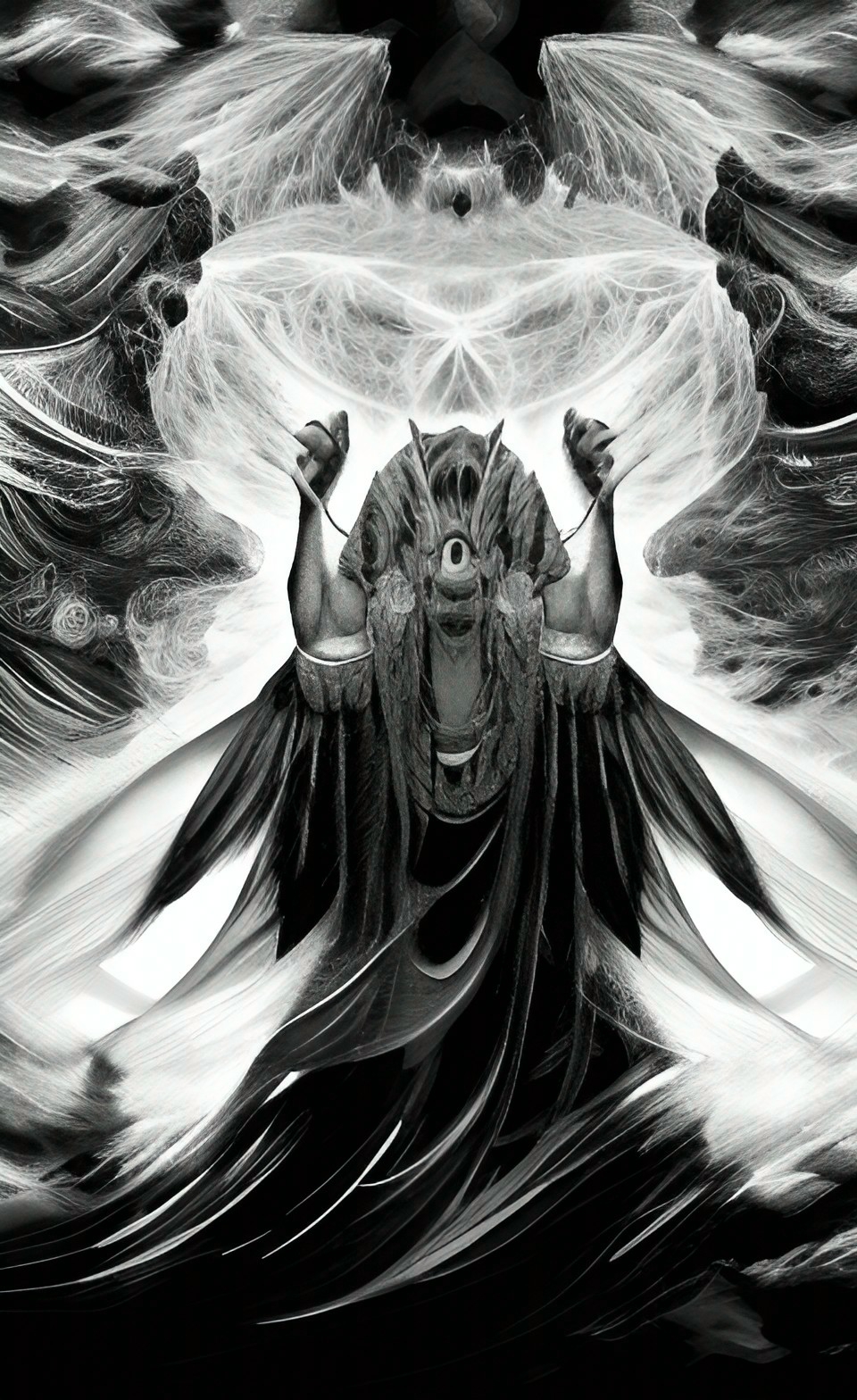 Elemental Detection
Elemental Detection
Tier: 1
Prayer: 5 segments
Spirit Cost: 10 points
Range: Internal to the Shaman
Duration: 1 round per level
Area of Effect: 10// spherical volume
Classification: Divination
Shamans study the ways of the Elemental planes. To that end, the Shaman can use this Sigil to detect elemental beings at a distance. At the base level, the Shaman can detect the quantity, direction, and relative power of any elemental entity within 10// of the Shaman's current position. With respect to relative power, the information gleaned is "less powerful", "approximately equal power", and "more powerful". Summoned elementals are detectable, as are elemental spirits bound into objects. Likewise, entities not summoned but who are native to the elemental planes can be detected by this spell (presumably, a sentient Elemental could choose to visit the material realm on its own volition). As a side effect, Fey are detectable using this Sigil. A Shaman who happens to be a Fey will detect himself/herself without fail every time.
The detection radius increases as the Shaman ascends in level.
- Levels 1 to 4: The radius of detection is 10//.
- Levels 5 to 9: The radius of detection is 30//.
- Levels 10 to 14: The radius of detection is 50//.
- Levels 15 to 19: The radius of detection is 70//.
- Levels 20 or higher: The radius of detection is 90//.
Changes from the printed (book) version: This is a new spell.
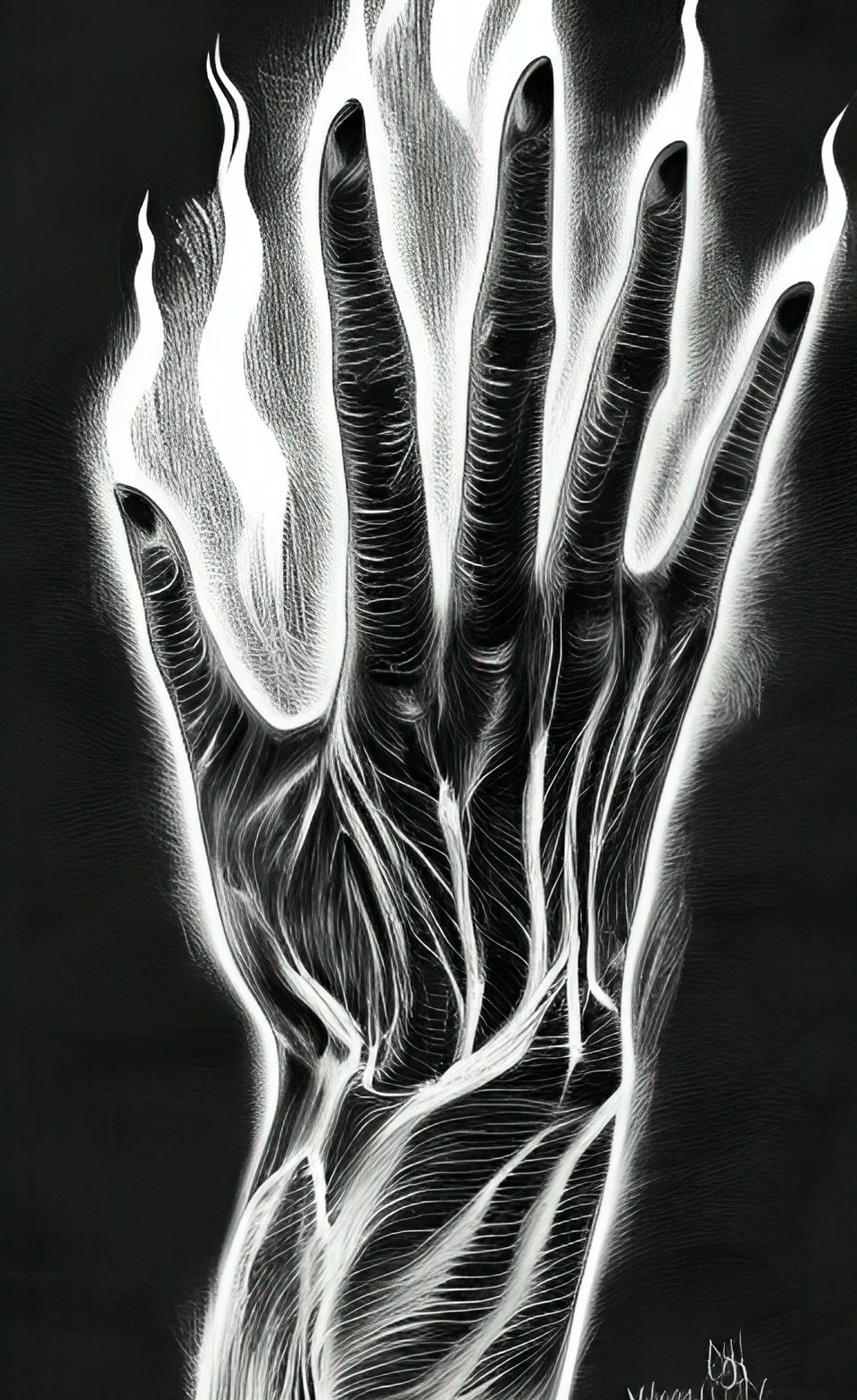 Fire Hand
Fire Hand
Tier: 1
Prayer: 5 segments
Spirit Cost: 6 points
Range: Internal to the Shaman
Duration: 1 turn/level or until used as a weapon
Area of Effect: 3// sphere (as illumination) or 3// line-of-sight (as a weapon)
Classification: Combat or Elemental Fire
Fire Hand is usually one of the first Sigils that a Shaman learns, for this spell creates both light and can be used as a weapon. To draw the required Sigil, the Shaman pricks his/her finger in order to release a single drop of blood with which the Sigil is drawn upon the Shaman's palm. Once completed, the Sigil erupts in bright amber flame that illuminates a 3// spherical volume. The tiny wound required does not merit a hit point (since the physical damage is truly trivial), nor do the flames damage the Shaman's body. In fact, the Shaman will be less likely to suffer the effects of hypothermia whilst the spell is in effect (Cold DR2). The flaming hand can be used with great utility -- such as jump-starting a campfire, cooking food, reheating cold coffee, or sterilizing medical equipment.
Fire Hand is also useable as a weapon. The Shaman can hurl the flame from his/her hand at a target up to 3// away and inflict 1d6 damage (elemental fire damage) if the Shaman makes a successful Ranged Touch Attack. Once thrown, the Shaman has the option to either allow the spell to extinguish or pay an additional 6 spiritual points to summon more fire to his/her hand. Likewise, the Shaman can automatically renew the spell at the end of the normal duration by paying the maintenance cost (thus no Faith check or additional blood is required.)
In the event that the Shaman is Undead, the caster can use a tiny amount of donor blood from a willing ally. This is due to the fact that Undead generally don't have blood.
The power of this spell does increase as the Shaman ascends in level.
- Levels 1 to 4: Illuminates 3//; damage is 1d6 with 3// range; Cold DR is 2.
- Levels 5 to 9: Illuminates 4//; damage is 2d6 with 4// range; Cold DR is 4.
- Levels 10 to 14: Illuminates 5//; damage is 3d6 with 5// range; Cold DR is 6; Shaman can create silver flame that affects Undead.
- Levels 15 to 19: Illuminates 6//; damage is 4d6 with 6// range; Cold DR is 8; Shaman can create silver flame that affects Undead or cobalt flame that affects spiritual entities.
- Levels 20 and higher: Illuminates 7//' damage is 5d6 with 7// range; Cold DR is 10.
- Shaman can create silver flame that affects Undead or cobalt flame that affects spiritual entities.
If the Shaman is Undead, he/she cannot call forth silver flame (as it would be self-injurious). Instead, an Undead Shaman can call forth flame that is of a deep violet hue that confuses living opponents (-2 to perception and scales equally to the "cold" damage resistance).
Changes from the printed/book version: The spell scales with level; silver/cobalt flames are an option at higher levels.
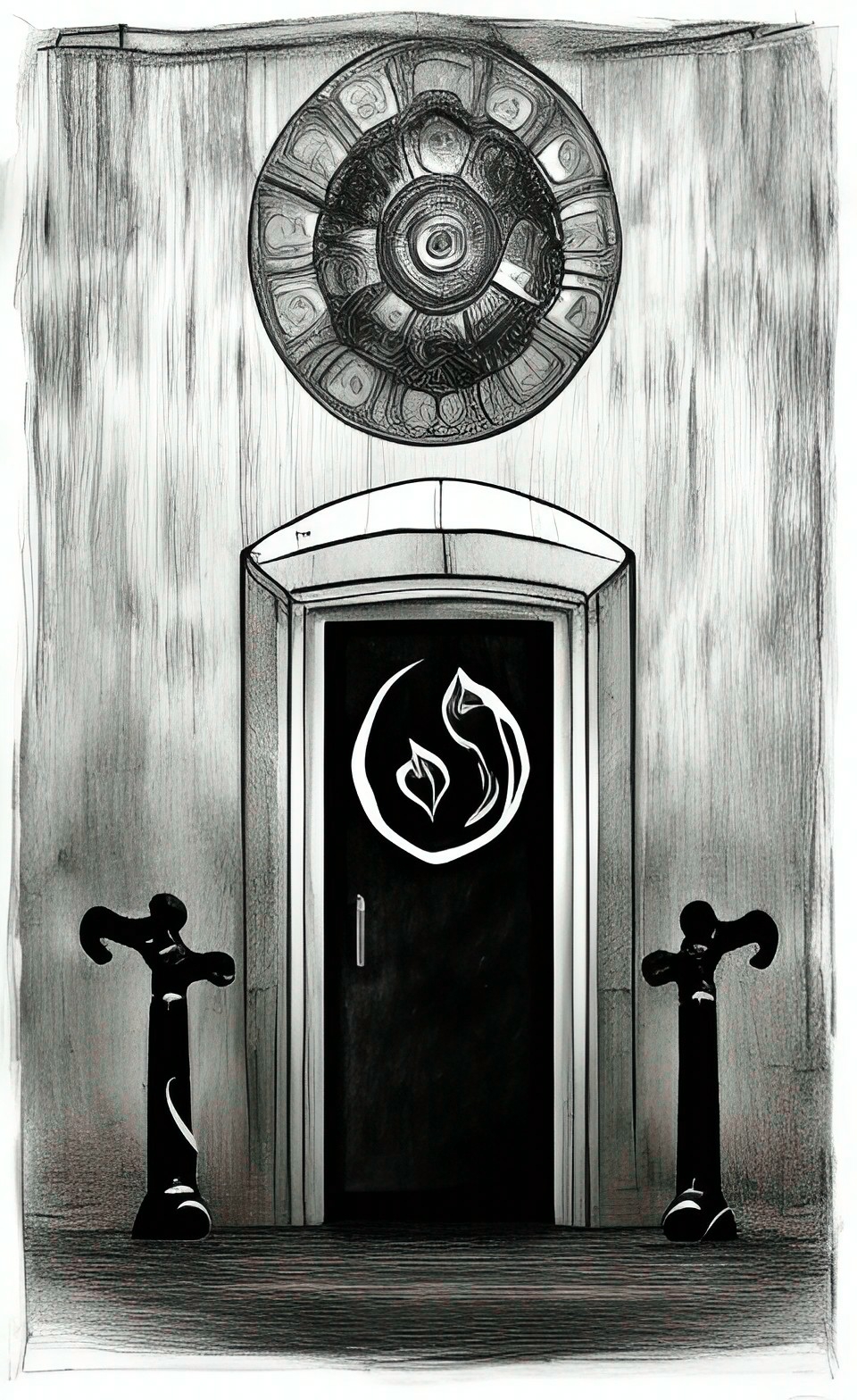
Flaming Seal
Tier: 1
Prayer: 1 round
Spirit Cost: 9 points
Range: Touch
Duration: Until discharged
Area of Effect: One surface (such as a book, a door, a grate, a window, a suit of armor, etc.)
Classification: Defense or Elemental Fire
Unlike Priests, who evangelize and tell anyone about their faith who are willing to listen, Shamans value their privacy and typically only teach the worthy and the truly dedicated. In order to keep sacred lore safe from prying eyes, Shamans have developed a Sigil that zaps the overly curious folk who may want to just "borrow" that sacred tome for "just a few days".
The Shaman has a couple of options in casting this spell. As with Fire Hand, the writing medium is a single drop of the Shaman's blood (this is insufficient to count as a loss of a hit point). If the Shaman is Undead (and thus doesn't actually have blood), he/she can use a drop of blood obtained from a willing, trusted ally. If the Sigil is drawn on flash paper, taped to the surface of the item to be protected (like a book or a door), and then set on fire, the Sigil is transferred to the object and the Sigil is invisible to ordinary sight. Magical detection spells, of course, would still indicate the presence of the Sigil. Alternatively, the Shaman can simply draw the Sigil onto the object. The Sigil remains visible if that method is used. With respect to damage, the Shaman can choose to have the Sigil inflict lethal damage (ordinary damage) or stunning damage (hit points recover at a rate of 1 per turn and will only incapacitate the target if hit points are reduced to -10 or less). The Sigil can be bypassed by speaking a code word (set by the Shaman when the Sigil is cast). Likewise, the Shaman does not need to use a code word on Sigils he/she creates.
At base level, the Flaming Seal can either inflict 1d6 damage (ordinary) or 2d6 damage (stun/non-lethal). The damage increases as the Shaman ascends in level.
- Levels 1 to 4: The Flaming Seal inflicts 1d6 damage (ordinary) or 2d6 damage (stun/non-lethal).
- Levels 5 to 9: The Flaming Seal inflicts 2d6 damage (ordinary) or 4d6 damage (stun/non-lethal).
- Levels 10 to 14: The Flaming Seal inflicts 3d6 damage (ordinary) or 6d6 damage (stun/non-lethal); Also inflicts 2d6 silver fire damage against Undead (in either configuration).
- Levels 15 to 19: The Flaming Seal inflicts 4d6 damage (ordinary) or 8d6 damage (stun/non-lethal); Also inflicts 3d6 silver fire damage against Undead (in either configuration) and 1d6 cobalt fire damage against spiritual entities (in either configuration).
- Levels 20 or higher: The Flaming Seal inflicts 5d6 damage (ordinary) or 10d6 damage (stun/non-lethal); Also inflicts 4d6 silver fire damage against Undead (in either configuration) and 2d6 cobalt fire damage against spiritual entities (in either configuration).
An Undead Shaman cannot use silver fire. Instead, the spell generates a deep violet flame that confuses living targets for 1 round per level of the Shaman. The overall effect is a -4 penalty to perception checks.
Changes from the printed (book) version: The spell can now be cast for non-lethal damage. The spell can also inflict silver/cobalt damage at high levels.
 Healing
Healing
Tier: 1
Prayer: 3 segments
Spirit Cost: 8 points
Range: Touch (can also be the Shaman)
Duration: Instantaneous
Area of Effect: One person (can be the Shaman)
Classification: Healing
Shamans and Priests both have mastery of healing in common. While Priests tend to learn the ways of healing at urban universities, Shamans learn from their elders in small groups or one-on-one. Either way, when someone is injured, it is usually the Shaman or Priest they turn to for help. Like the Priest spell of similar name, this spell heals ordinary wounds (cuts, bruises, stab wounds, burns, broken bones, etc.). It does not cure poison, disease, radiation poisoning, or curses. To cast this spell, the Shaman need only draw the Sigil of Healing on the injured person. The Shaman can use a pen, marker, brush, or any similar instrument.
If the Shaman is Undead, then this spell will work normally when used on an Undead recipient (since both have an animating force drawn from the Plane of Shadow). If an Undead Shaman wishes to heal a living recipient, then the spell cost is 12 points (due to the required energy conversion.)
Like with the Priest, the healing spell increases in potency as the Shaman increases in level.
- Levels 1 to 4: 1d8 healing
- Levels 5 to 9: 2d8 healing
- Levels 10 to 14: 3d8 healing
- Levels 15 to 19: 4d8 healing
- Levels 20 and up: 5d8 healing
Changes from the printed (book) version: The level of healing scales in proportion with the Shaman's level.
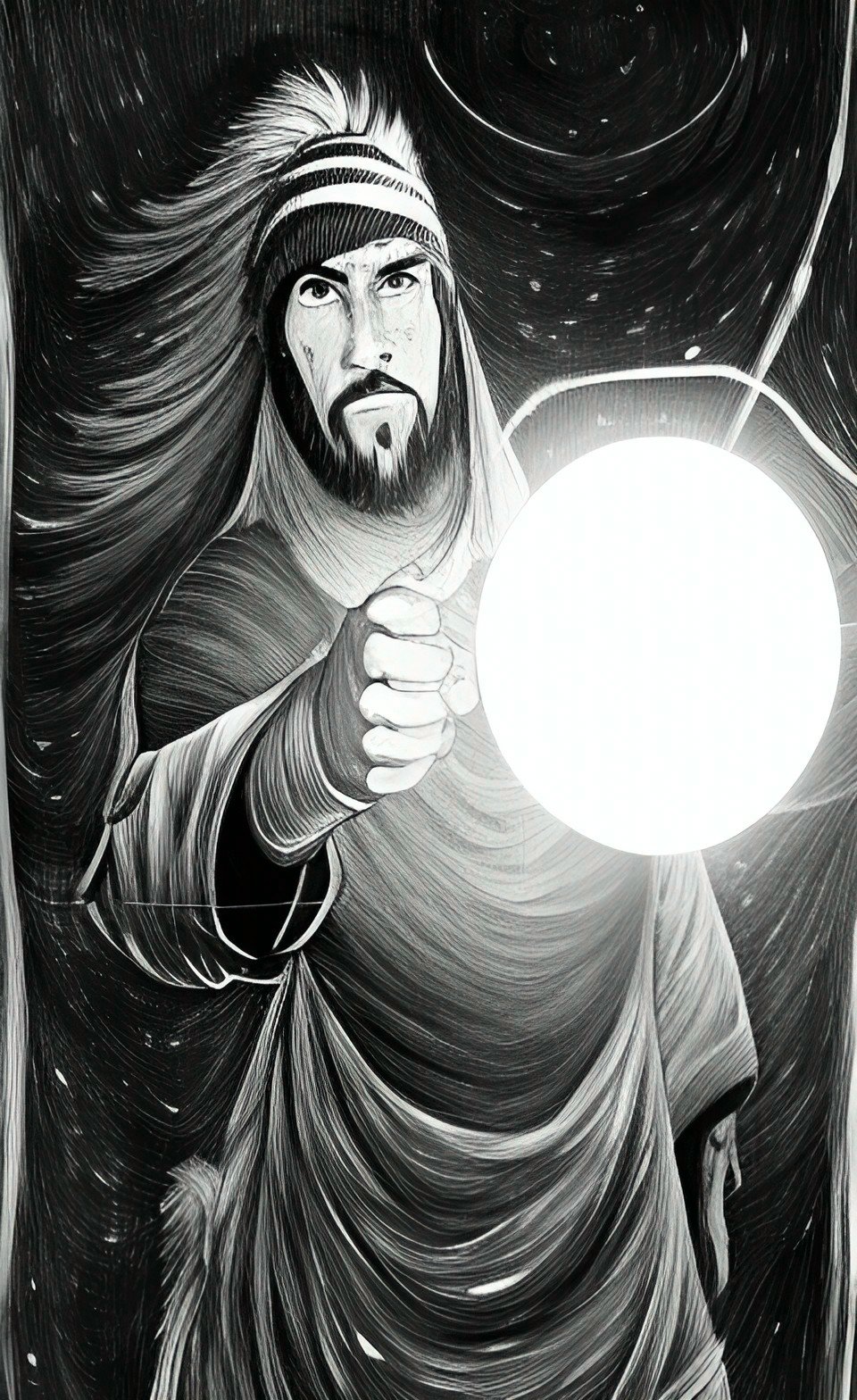 Illumination
Illumination
Tier: 1
Prayer: 3 segments
Spirit Cost: 4 points
Range: Touch
Duration: 1 hour per level
Area of Effect: One object (lights a 3// radius)
Classification: Utility
While Fire Hand has its uses, sometimes a Shaman needs an ordinary, non-weaponized light source. The Shaman needs only draw the Sigil of Illumination on some object that the he or she would like to glow. For example, a Shaman could make his sword glow, or a shield, or a crystal, or a staff -- any non-living object at all. The sigil is typically drawn with a marker, pen, or brush. The default light is white in color, but the Shaman could choose some other color, such as red or yellow. This spell is not weaponized. It only creates light.
Like many Shaman spells, the power of the Sigil of Illumination increases in potency as the Shaman ascends in level.
- Levels 1 to 4: The spell illuminates a 3// radius.
- Levels 5 to 9: The spell illuminates a 6// radius.
- Levels 10 to 14: The spell illuminates a 9// radius.
- Levels 15 to 19: The spell illuminates a 12// radius.
- Levels 20 and higher: The spell illuminates a 15// radius.
Changes from the printed (book) version: The spell lasts hours per level instead of rounds per level.
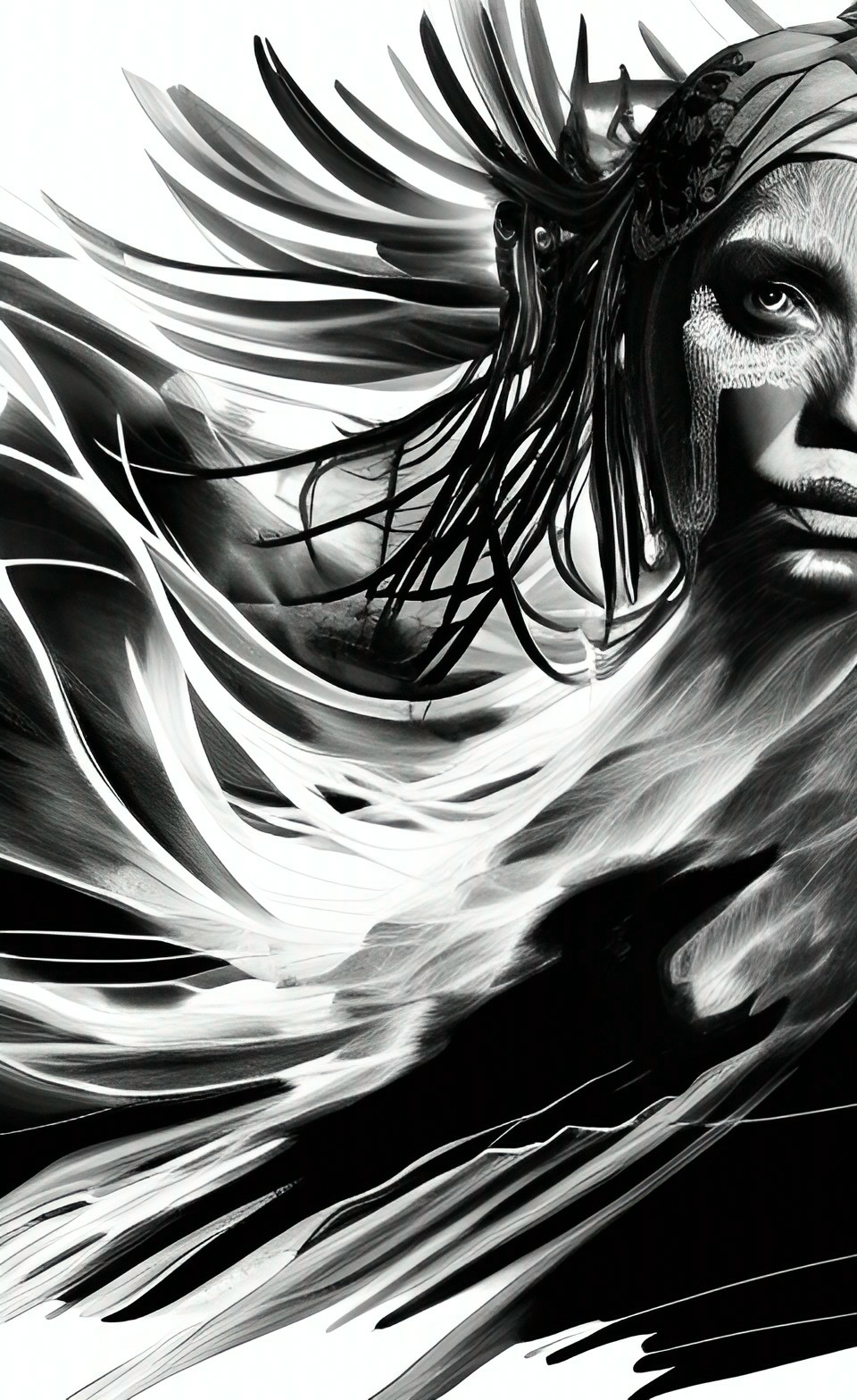 Masking
Masking
Tier: 1
Prayer: 8 segments
Spirit Cost: 18 points
Range: Touch (can also be the Shaman)
Duration: 1 turn per level
Area of Effect: One person (initially)
Classification: Defense or Divination
As the Shaman is a character class whose domain spans both the physical and spiritual realms, sometimes it is useful for the Shaman to keep a low profile in the non-material dimensions. To that end, the Shamanic magical tradition has developed a Sigil that produces a stealth-like effect in the spirit world.
At base level, the Sigil produces the spiritual equivalent of camouflage. Thus, if the Shaman is motionless or moving slowly (half movement speed or less), he/she has a 30% chance of being overlooked by incorporeal spirits (like angels and demons). Likewise, the Shaman has a 30% chance of not being detected by a changeling employing Sense Presence or Empathy. Divination spells that detect life (in general) or specific individuals will also have a 30% chance of failure. At base level, the masking effect has a secondary potency that extends 10' in all directions. This peripheral masking effect operates at 15% efficacy.
At higher level, the Shaman can either choose to bless multiple people with spiritual masking or bless a single person and have a larger secondary area of effect.
- Levels 1 to 4: Masking affects one person at 30% efficacy and generates a 10' radius secondary effect at 15% efficacy.
- Levels 5 to 9: Masking affects two people at 40% efficacy and generates a 10' radius secondary effect at 20% efficacy or one person with a 20' radius secondary effect.
- Levels 10 to 14: Masking affects three people at 50% efficacy and generates a 10' radius secondary effect at 25% efficacy or one person with a 30' radius secondary effect.
- Levels 15 to 19: Masking affects four people at 60% efficacy and generates a 10' radius secondary effect at 30% efficacy or one person with a 40' radius secondary effect.
- Levels 20 or higher: Masking affects five people at 70% efficacy and generates a 10' radius secondary effect at 35% efficacy or one person with a 50' radius secondary effect.
Changes from the printed (book) version: This spell has been rewritten from scratch.
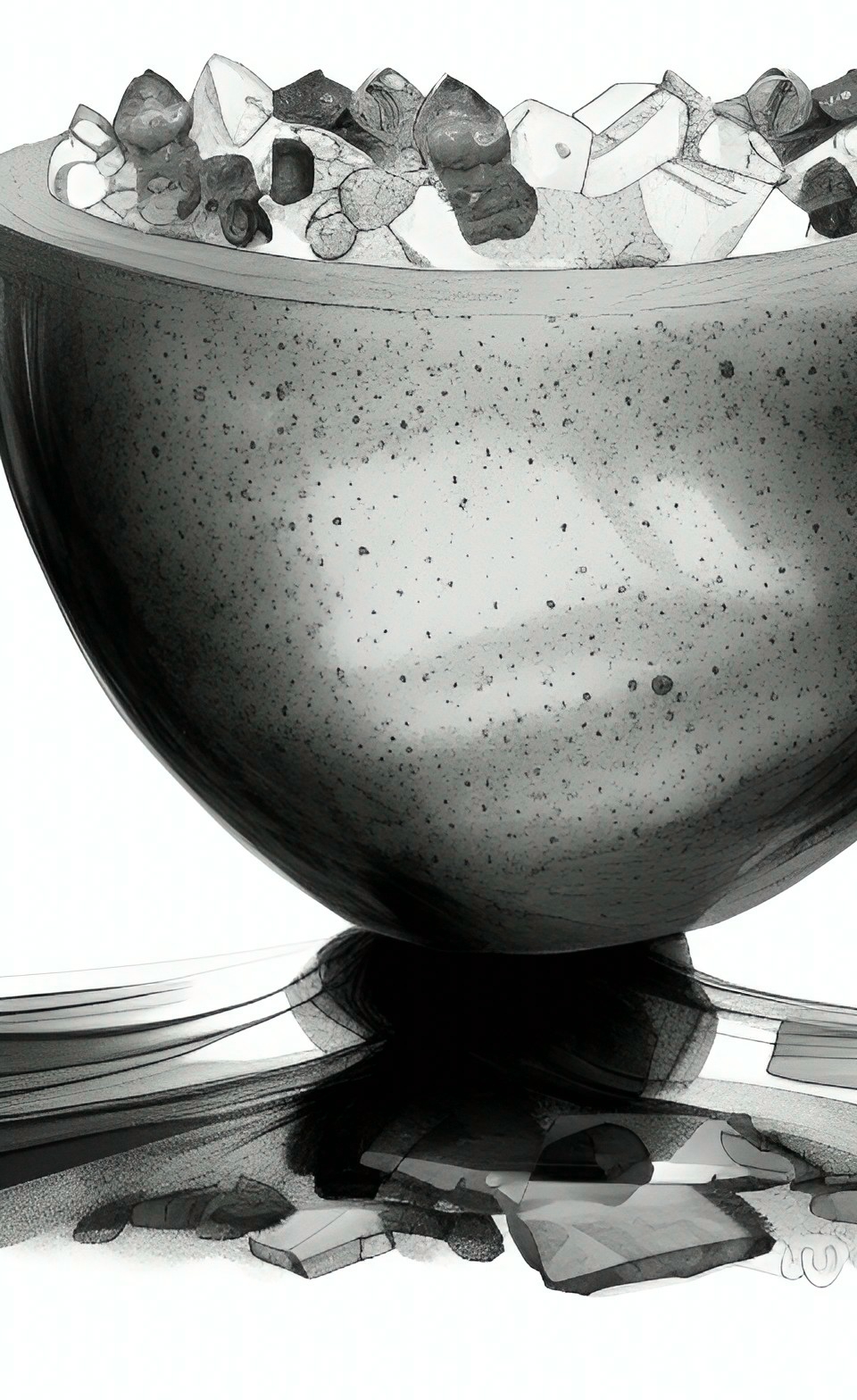 Planar Gift
Planar Gift
Tier: 1
Prayer: 5 segments
Spirit Cost: 2 points
Range: 10// line of sight
Duration: Instantaneous
Area of Effect: 1' sphere of elemental material
Classification: Elemental
While this spell does not summon an elemental being, sometimes the Shaman needs to just summon elemental materials instead. For example, a thirsty Shaman could summon a bit of water. Likewise, a Shaman could call up a ball of flame to jump-start a campfire. While not ordinarily called upon, the Shaman could certainly find uses of a compressed sphere of fresh air. Finally, the Shaman could call upon Earth for mundane materials such as a 1' sphere of salt, coal, or topsoil. It specifically does not summon exotic materials such as diamonds (or very expensive gems) and money-related metals (gold, silver).
This spell is not easily weaponized. However, the Shaman could theoretically make gunpowder by asking the Plane of Earth for coal, sulphur, and potassium nitrate (none of these chemicals are particularly rare or costly, thus would qualify as "mundane".) This is assuming that the Shaman also has the chemistry skill.
The number of materials summoned increases as the Shaman ascends in level.
- Levels 1 to 4: The Shaman can summon a single 1' sphere of elemental material.
- Levels 5 to 9: The Shaman can summon two 1' spheres of elemental materials. The two spheres do not have to be of the same type.
- Levels 10 to 14: The Shaman can summon three 1' spheres of elemental materials. The spheres do not have to be of the same type.
- Levels 15 to 19: The Shaman can summon four 1' spheres of elemental materials. The spheres do not have to be of the same type.
- Levels 20 and higher: The Shaman can summon five 1' spheres of elemental materials. The spheres do not have to be of the same type.
Changes from the printed (book) version: This is a new spell.
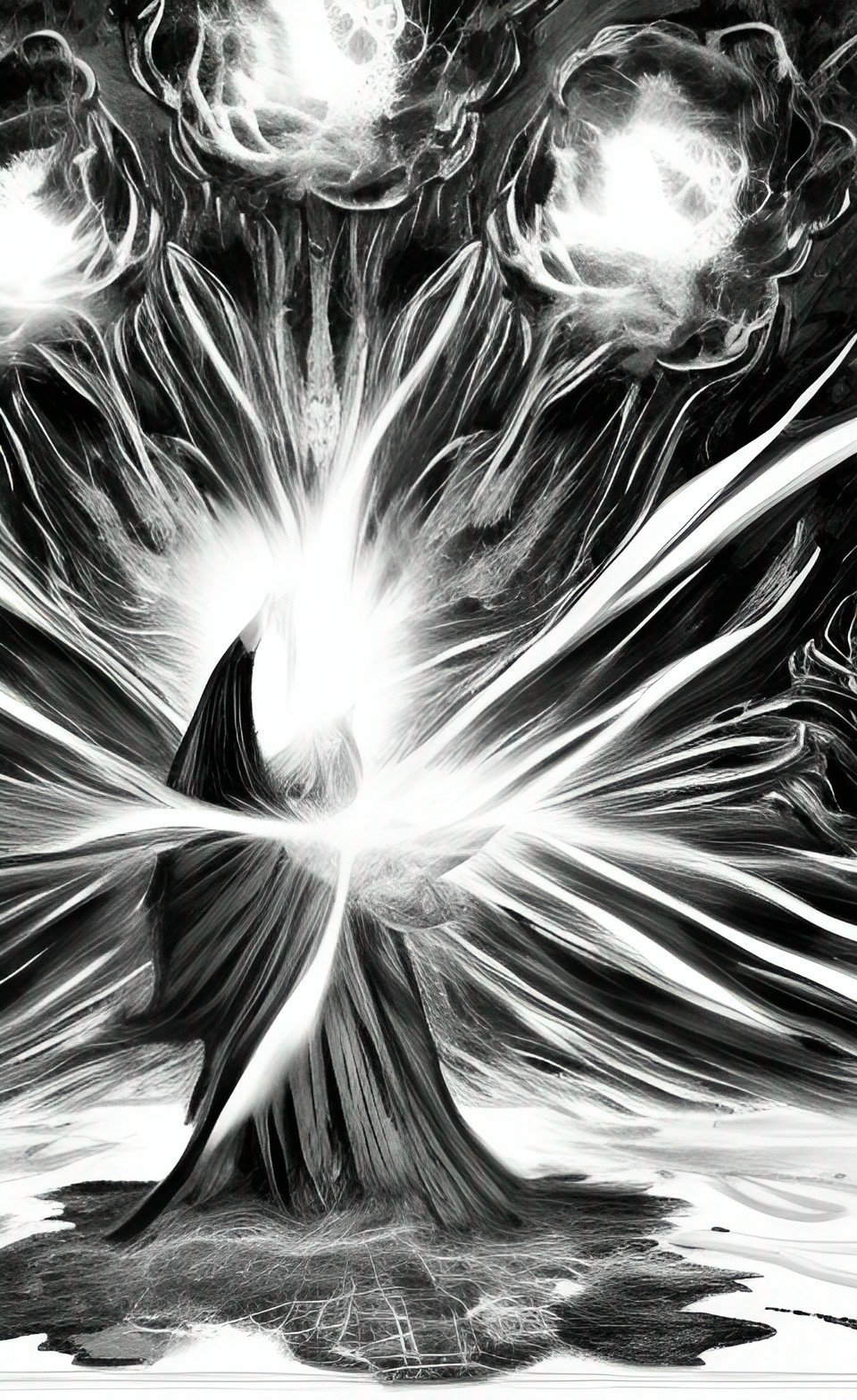 Scrying
Scrying
Tier: 1
Prayer: 1 turn
Spirit Cost: 15 points
Range: Internal to the Shaman
Duration: 1round per level
Area of Effect: One person
Classification: Divination
Shamans operate in both the natural world and in the spirit world. It is therefore understandable that members of the local community might seek the Shaman's services in locating a missing person or even simply checking up on the well-being of a distant relative. For example, a man might ask a Shaman to locate his kidnapped wife. Of a mother might want to know that her soldier-son is still okay. To cast this spell, the Shaman must draw a likeness of the person sought (this is why the spell takes a turn to cast). The drawing can be in any medium the Shaman prefers (pen-and-ink, charcoal, watercolor, oil paint, etc.) The Shaman gains a +1 bonus to the power activation roll and a +10% bonus on the percentile roll if he/she has the Artistic Ability skill.
Once the Shaman completes the drawing and affixes the Sigil to the paper, the drawing magically animates for a brief period of time (1 round per level). At low levels, the image is murky and indistinct. For example, the Shaman can tell if the target is indoors or outdoors. At higher levels, the view comes into focus. At level 20 and higher, the view is so clear that it is as if the Shaman is looking through a window.
The chance of success depends on the emotional closeness of the petitioner to the target. For example, a petitioner would have a better chance asking the Shaman to locate a spouse than a coworker. And a coworker is easier to find than a stranger. Of course, the chance of success increases as the Shaman ascends in level. Also, a successful Scrying reveals relative direction and distance to the target. If the target is off-world or in another dimension, the direction/distance will not return any information. If the person is dead, the Shaman will know this fact but will not know the location of the deceased (a Speaker for the Dead could help out in that event).
The paper burns and leaves no ash at the end of the spell. If the Shaman's power activation roll or scrying roll fail, the drawing remains intact, and the Shaman can try again.
| Relationship to the Shaman | Levels 1-4 | Levels 5-9 | Levels 10-14 | Levels 15-19 | Levels 20+ |
| Spouse/Lover | 12% | 24% | 36% | 48% | 60% |
| Family Member | 10% | 20% | 30% | 40% | 50% |
| Friend | 6% | 12% | 18% | 24% | 30% |
| Coworker | 5% | 10% | 15% | 20% | 25% |
| Known Person | 3% | 6% | 9% | 12% | 15% |
| Met a few times | 2% | 4% | 6% | 8% | 10% |
| Met once | 2% | 3% | 4% | 5% | 6% |
| Only heard of or talked about | 1% | 2% | 2% | 2% | 3% |
| View Quality | Very low. Like an experimental artificial retina | Low. Like 1800s Daguerreotype | Moderate. Like 1920s film | High. Like 1970s TV | Very high. Like looking through a window |
| Accuracy | 20 miles | 2 miles | 2,000' | 200' | 20' |
Changes from the printed (book) version: The relationship modifiers have been changed to make more sense for game play. The spell no longer costs Constitution.
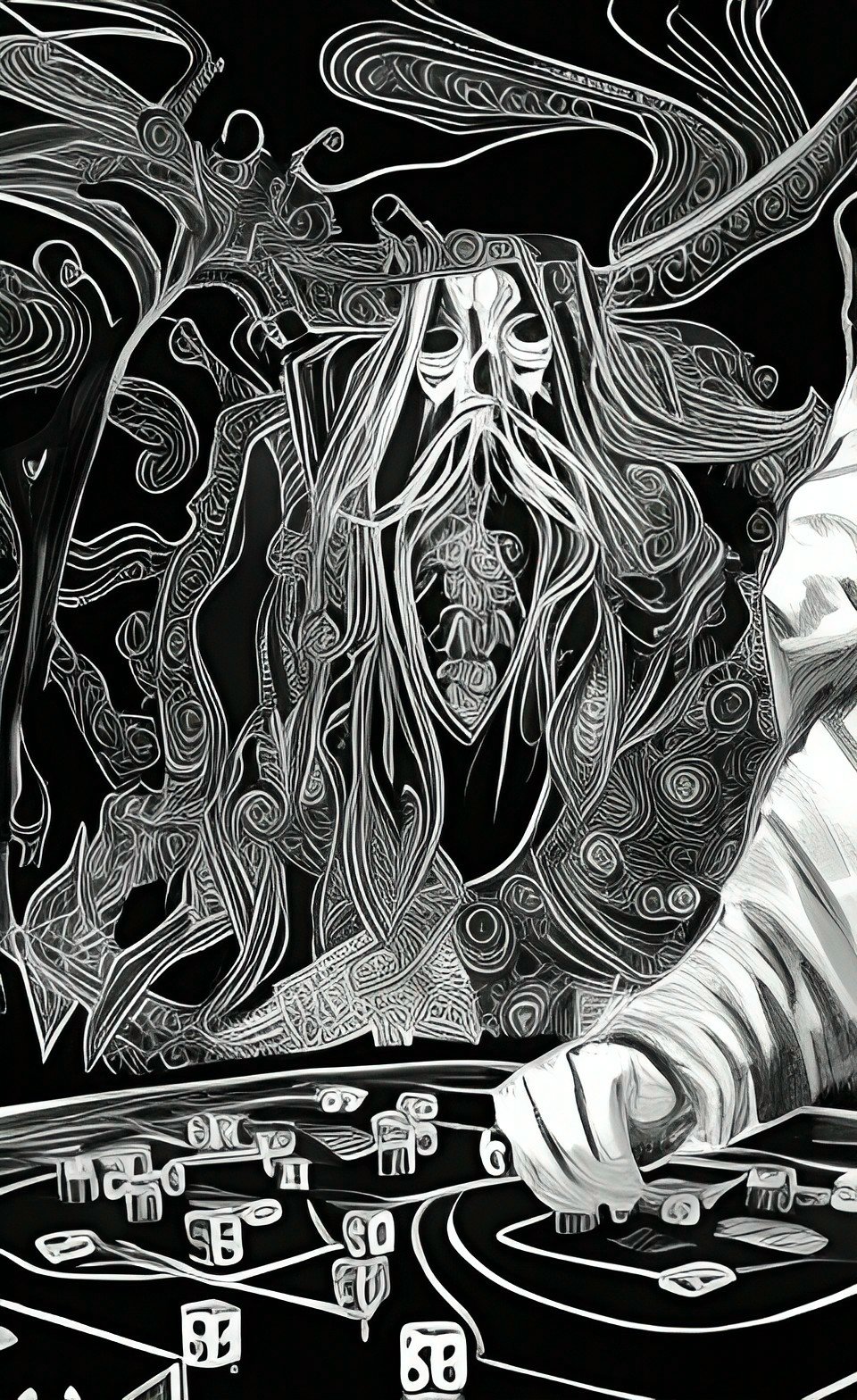 Second Chance
Second Chance
Tier: 1
Prayer: 1 round
Spirit Cost: 12 points
Range: Touch (can also be the Shaman)
Duration: Until discharged
Area of Effect: One person (initially)
Classification: Defense or Benedictions
While Shamans are knowledgeable about nature and certain forms of science (particularly herbalism), they are also a superstitious lot. A side effect of their superstitious outlook is the development of the Sigil of Second Chance. This Sigil activates when a character has missed a roll that is critical to either the character's health (such as a failed save) or critical to a battle (such as a failed attack, parry, or spell activation), or critical to the continuance of the plot (such as a failed Perception check or a failed Willpower check). Any die roll can be retaken once. The spell is quiescent until triggered. When first cast, the Shaman draws the Sigil upon the recipient's body using a single drop of the Shaman's blood (this does not consume hit points). Once drawn, the Sigil does not wash off until it is triggered, whereupon it flashes in crimson light for a moment before disappearing.
Game Masters are encouraged to add role-playing flair to this spell. For instance, rather than simply saying "Ok, roll that save again", improvise something meaningful, like "that Construct's laser actually ricocheted off your watch", or "you heard that mine click when you stepped on it, but I guess it's a dud." For a failed Perception check, the Game Master might say, "You missed that old book on the shelf, but something in the back of your mind told you to take one last look just to be on the safe side".
This spell does not stack (i.e., no character can have more than one Second Chance spell quiescent at once. Of course, it does stack other spells and other magical artifacts. For instance, if a character owns a ring that grants good luck, she could still receive benefit from the Sigil of Second Chance.
Like many other Shaman spells, the efficacy of Second Chance increases as the Shaman ascends in level.
- Levels 1 to 4: The Shaman can bless one person with this Sigil.
- Levels 5 to 9: The Shaman can bless two people with this Sigil.
- Levels 10 to 14: The Shaman can bless three people with this Sigil.
- Levels 15 to 19: The Shaman can bless four people with this Sigil.
- Levels 20 and higher: The Shaman can bless five people with this Sigil.
Changes from the printed (book) version: The spell now permits a re-roll instead of adding value to a roll; the spell scales with the Shaman's level.
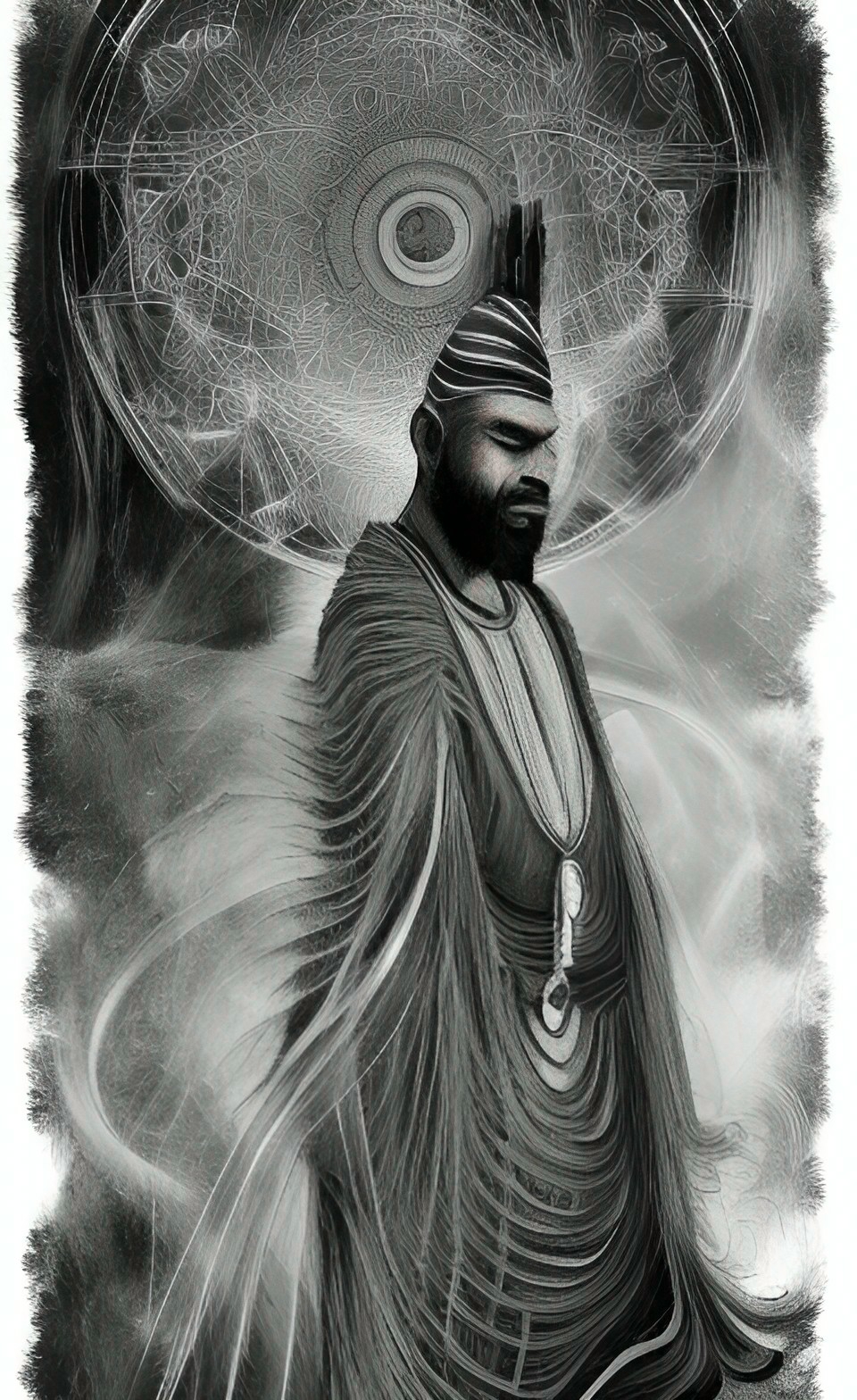 Spiritual Insight
Spiritual Insight
Tier: 1
Prayer: 1 round
Spirit Cost: 18 points
Range: Internal to the Shaman
Duration: 1 round per level
Area of Effect: 6// line-of-sight
Classification: Divination
The Shaman is a healer, guide, and protector of his or her community. to that end, the Shaman must be ever vigilant against threats from the spirit realm. The Sigil of Spiritual Insight allows the Shaman to detect spiritual forces and magical emanations. For example, a Shaman could detect if a sword had an enchantment or if a treasure chest had a curse placed upon it. Likewise, a Shaman could determine if a humanoid opponent has magical buffs that aid in combat. This spell differs from the Priestly version in that it costs more to cast but has a longer duration. The Shaman need only trace the Sigil on his/her body (with a marker, pen, etc.).
It is worth noting that this spell has a greater range if the Shaman is Undead. This is due to Undead entities having innate magical sight. Therefore, in this circumstance, the spell has a 9// range instead of 6//.
Of course, the accuracy of the Sigil of Insight increases as the Shaman ascends in level.
- Levels 1 to 4: "Yup, this sword is magical".
- Levels 5 to 9": "This sword has three enchantments. One is major and two are relatively minor".
- Levels 10 to 14: "This sword transfers life energy from the target to the user during combat. It also resists corrosion. The sword generates small amounts of fire."
- Levels 15 to 19: "This sword energy-drains 1d4 hit points per successful attack, in addition to the ordinary damage of 1d10. The sword saves versus corrosion-causing spells at +2 and will never rust from ordinary exposure. The sword can start a campfire flame or serve as a standard torch, but it is insufficient for inflicting damage in combat."
- Levels 20 and higher: "This sword energy-drains 1d4 hit points per successful attack, in addition to the ordinary damage of 1d10. The sword saves versus corrosion-causing spells at +2 and will never rust from ordinary exposure. The sword can start a campfire flame or serve as a standard torch, but it is insufficient for inflicting damage in combat. It was forged 80 years ago by Nostron Del Machin, a Necromancer, sculpture artist, and blacksmith from Cali on West Point. Only five such swords were ever made. Wow! You have a collector's item!"
Changes from the printed (book) version: The spell no longer grants a bonus to Perception checks but does have a much more powerful "detect magic" capability.
 Stealth of the Field Mouse
Stealth of the Field Mouse
Tier: 1
Prayer: 2 segments
Spirit Cost: 15 points
Range: Touch (can also be the Shaman)
Duration: 1 turn per level
Area of Effect: One person (initially)
Classification: Defense or Utility
As a Shaman intensively studies Nature, he or she can eventually learn to emulate the qualities of other animals found in nature. In this instance, the field mouse can teach the Shaman about hiding in plain sight, moving silently through the grass, or climb over objects. At base level, the Shaman receives a +30% to camouflage, +35% to move stealthily, and +20% to scale walls. This power increases as the Shaman ascends in level. It also stacks with any Thief/Investigator-type skills of the same name. Thus, if a Shaman is actually a split-class Shaman/Thief (very possible if the Shaman worships Abbon Mort), this spell would stack with the Thief "move stealthily" and "scale walls" skills. Note: camouflage is not invisibility. Camouflage basically only works when the Shaman is motionless or moving very slowly. At higher levels, the Shaman can confer this power upon several people as well.
- Levels 1 to 4: +30% to camouflage, +35% to move stealthily, and +20% to scale walls. Affects one person.
- Levels 5 to 9: +35% to camouflage, +40% to move stealthily, and +25% to scale walls. Affects two people.
- Levels 10 to 14: +40% to camouflage, +45% to move stealthily, and +30% to scale walls. Affects three people.
- Levels 15 to 19: +45% to camouflage, +50% to move stealthily, and +35% to scale walls. Affects four people.
- Levels 20 or higher: +50% to camouflage, +55% to move stealthily, and +40% to scale walls. Affects five people.
Changes from the printed (book) version: The spell now grants three types of thief-related skills instead of just one.
Things to Consider
|
